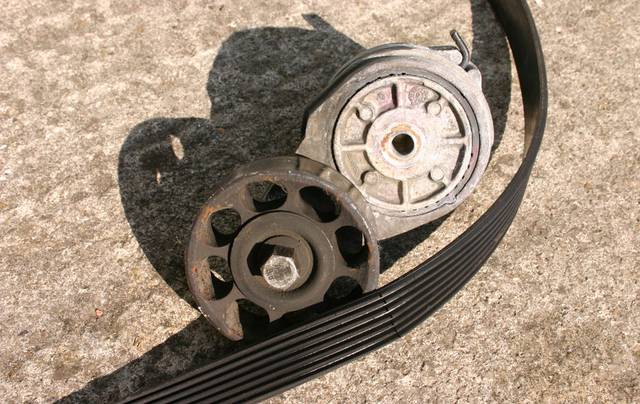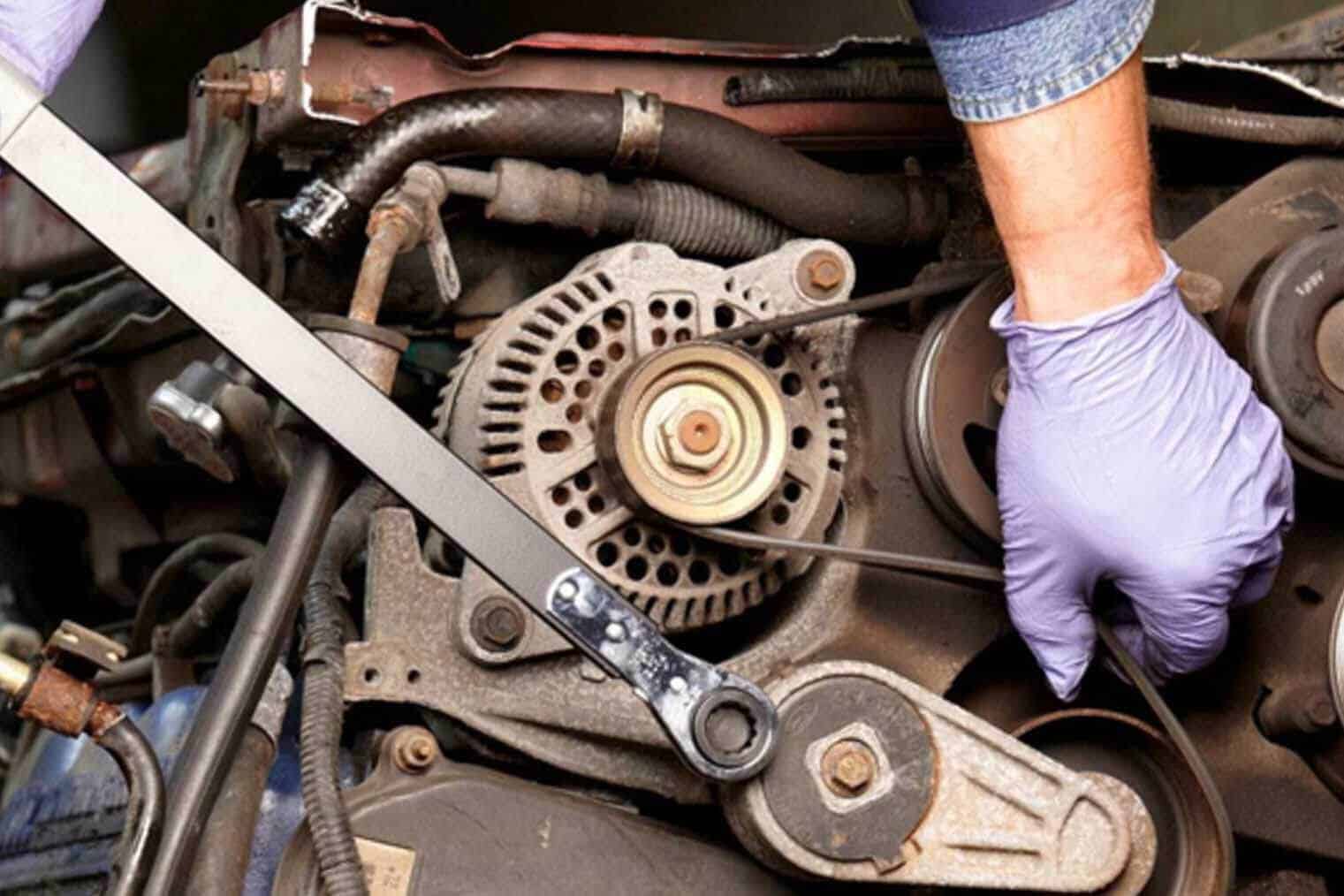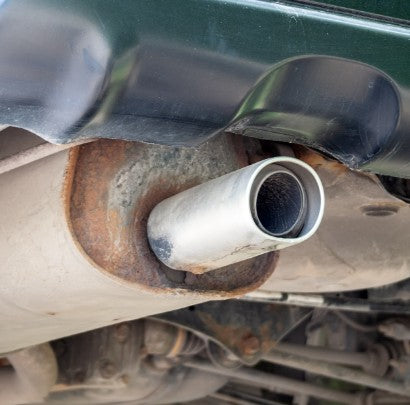How Much Does It Cost to Replace a Belt Tensioner?
Replacing a belt tensioner typically costs between $140 and $400. The price depends on your car’s make and model, as well as labor costs.
A belt tensioner ensures that your car’s serpentine belt operates smoothly by applying the correct tension. This small but critical component is pivotal for maintaining the integrated working of your car’s alternator, air conditioner, and power steering pump. Over time, a tensioner can wear out or become damaged, leading to a compromised belt system which might squeak, loosen, or snap, potentially causing a breakdown.
Timely replacement of the belt tensioner can prevent more costly repairs and maintain your vehicle’s health. Choosing a professional mechanic for installation is recommended, as they can guarantee the work is performed accurately, ensuring your vehicle remains reliable on the road.

Credit: www.autoguru.com.au
Understanding Belt Tensioners
Belt tensioners play a crucial role in your vehicle’s engine. These components maintain the belt’s tension, ensuring it runs smoothly. Without the right tension, belts could slip, potentially leading to engine performance issues or breakdowns.
What Is A Belt Tensioner?
A belt tensioner is an integral part of your car’s engine. It keeps the serpentine belt tight against the pulleys that drive various engine parts. The tensioner ensures the belt delivers power to components like the alternator, the water pump, and the air conditioning system.
Signs Of A Failing Belt Tensioner
Recognizing a failing belt tensioner is key to avoiding expensive repairs. Here are signs to watch out for:
- Unusual noises such as squeaking or rattling from the engine bay.
- Visible wear or damage on the tensioner itself.
- The serpentine belt is misaligned or excessively loose.
- Battery warning light may illuminate if the alternator belt is affected.
- Engine overheating if the water pump belt is compromised.
Factors Influencing Replacement Costs
Under the hood of your automobile, the belt tensioner plays a pivotal role. This component keeps the serpentine belt in its place, ensuring that everything from the alternator to the power steering pump operates smoothly. Given its importance, understanding the factors affecting the cost of replacing a belt tensioner is crucial for vehicle maintenance budgeting. The cost can vary, and several factors come into play.
Type Of Vehicle
One significant factor is the type of vehicle you drive. Generally, luxury cars and vehicles with complex designs demand a higher cost for parts and labor. This is because luxury vehicles often require specialized tools and expertise. Additionally, high-performance vehicles may feature more intricate belt tensioner systems, elevating the cost further. There’s a clear distinction between the cost of parts for a budget-friendly model versus a high-end vehicle.
Make And Model Variations
Costs also fluctuate with different makes and models. Every car has its unique design and engineering, which means the belt tensioner specific to your car’s make and model can affect the overall replacement cost. For instance:
- Certain cars may have tensioners that are more readily available and thus are cheaper.
- Other vehicles may require tensioner units that are part of a larger assembly, leading to a higher price tag.
Regional Cost Differences
The region where you reside can impact the price too. Labor rates, for example, can be heftier in urban areas compared to rural regions. Furthermore, availability of parts within your locale can affect the urgency and cost of shipping, should the part need to be ordered in. Here’s a brief comparison table for regional cost differences:
| Region | Expected Labor Cost | Part Availability |
|---|---|---|
| Urban Areas | Higher | Usually Good |
| Rural Areas | Lower | May Vary |
The cost of replacing a belt tensioner thus is not a fixed number; it’s shaped by the type of vehicle, its make and model, and even your location. When budgeting for this repair, take these factors into account.
Cost Breakdown For Tensioner Replacement
An understanding of the cost breakdown for tensioner replacement is key when budgeting for vehicle maintenance. Keeping engines running smoothly, belt tensioners play a crucial role. Over time, they may require replacement. This guide will explore the expenses involved in replacing a belt tensioner.
Part Costs
The price of a belt tensioner can vary depending on the car model and quality of the part. Generally, tensioners can range from $25 to $100 on average. Some vehicles may require more costly components, pushing prices up to $200 or more. For accuracy, check specific part costs for your car model. Here’s a simple breakdown:
- Economy cars: $25 to $50
- Standard vehicles: $50 to $100
- Luxury or high-performance cars: over $100
Labor Fees
Labor costs for replacing a belt tensioner also depend on various factors like labor rates in your region and how challenging the work is for your specific vehicle. Auto shops generally charge between $75 and $120 per hour for labor. The replacement job usually takes 1 to 2 hours. Here’s a quick overview of potential labor costs:
| Time (Hours) | Cost Range |
|---|---|
| 1 | $75 to $120 |
| 2 | $150 to $240 |
Total replacement costs can then be estimated by combining both part and labor charges. Keep in mind that additional taxes and fees might apply. It’s always a good move to get a detailed quote upfront.
Diy Versus Professional Replacement
Replacing a belt tensioner is a critical task for your vehicle’s maintenance. You can do it yourself or get a professional mechanic. Let’s explore the cost implications of both options.
Potential Savings
Choosing the DIY route for replacing a belt tensioner could result in significant savings. Here’s why:
- Labor costs: Professional services include labor charges, which can be substantial.
- Part prices: Buying the part yourself might be cheaper than a repair shop’s price.
Remember to account for the cost of any special tools you may need for the job.
Risks Of Diy
If you opt to replace the belt tensioner yourself, be aware of the risks:
- Mistakes: An incorrect installation might cause further damage.
- Tool investment: The upfront cost of specialized tools.
- Time: DIY repairs often take longer than expected.
Consider your expertise and the time commitment before starting a DIY replacement.
Additional Considerations
When budgeting for a belt tensioner replacement, remember two key factors. First, warranty and insurance. Second, think about future maintenance.
Warranty And Insurance
Your car’s warranty can play a big role in costs. If under warranty, you may pay less. Insurance seldom covers belt tensioners. Yet, for accidental damage, check your policy. It might help with the costs.
Future Maintenance
- Avoid future surprises with regular checks.
- Save on costs by bundling repairs.
- Choose a reliable mechanic. They spot issues early.
Remember, maintenance decreases the likelihood of costly repairs. Keep your car in top shape, and save money in the long run.

Credit: www.autoguru.com.au

Credit: uchanics.ca
Frequently Asked Questions On How Much Does It Cost To Replace A Belt Tensioner?
What Is The Average Cost Of Belt Tensioner Replacement?
The average cost for replacing a belt tensioner ranges from $140 to $400. Prices vary depending on the vehicle model, labor costs, and whether you opt for OEM or aftermarket parts.
Can I Replace A Belt Tensioner By Myself?
Replacing a belt tensioner is possible as a DIY project. However, it requires mechanical knowledge and the correct tools. If you are not experienced, it’s recommended to seek professional help to avoid any mistakes.
How Long Does A Belt Tensioner Last?
A belt tensioner’s lifespan typically ranges from 60,000 to 100,000 miles. Its durability depends on the vehicle’s make and model, driving conditions, and maintenance practices.
What Are The Signs Of A Failing Belt Tensioner?
Symptoms of a failing belt tensioner include strange noises from the engine bay, visible belt wear, or poor belt tension. An engine light on the dashboard may also illuminate if there is an issue.
Conclusion
Understanding the cost factors for replacing a belt tensioner is key to budgeting for vehicle maintenance. Prices vary based on car make, model, and mechanic rates. Taking proactive steps to address belt tensioner issues can save money and prevent future car troubles.
Remember, investing in timely repairs enhances the longevity of your vehicle. Keep these tips in mind for a smoother, more cost-effective car care experience.






